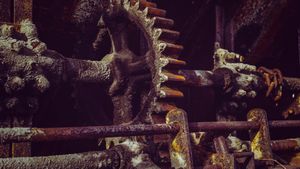The launch of the Wahl-O-Mat for the upcoming 2025 German Federal Election has ignited discussions across the nation as voters prepare to make their choices. Scheduled to take place on February 23, 2025, this election has gained significance, especiallyfollowing the recent political upheaval when Chancellor Olaf Scholz dismissed Finance Minister Christian Lindner, leaving the coalition government without its majority.
To assist with these uncertainties and provide clarity to voters, the Bundeszentrale für politische Bildung (bpb) has introduced the Wahl-O-Mat—a powerful online tool aimed at helping individuals clarify their political preferences and see how they align with those of 29 parties competing for seats.
The Wahl-O-Mat went live on February 6, 2025, just weeks before the anticipated election date, giving citizens ample time to engage with the tool. With 38 politically charged statements to assess, users can indicate whether they agree, disagree, or maintain neutrality on each statement. This interactive feature allows voters to weigh their priorities to generate results indicating their alignment with various parties.
Since its inception in 2002, the Wahl-O-Mat has been immensely popular, with usage surpassing 130 million across multiple elections. Political expert Stefan Marschall from the University of Düsseldorf pointed out how the tool primarily serves as both guidance and validation for voters. According to him, the majority utilize it to confirm their pre-existing party preferences rather than to establish new ones. "Von unseren Umfragen wissen wir, dass die meisten ihn nutzen, um zu schauen, ob die eigenen Positionen mit denen der Partei, die man präferiert, auch übereinstimmen," he remarked.
The implementation of the Wahl-O-Mat reflects the diverse and pressing issues facing Germany—issues including immigration, economic stability, and international support for Ukraine have become hot topics. Voters are increasingly concerned about how candidates will navigate these challenges. The tool helps distill complex debates, allowing users to assess their political inclinations efficiently.
This year, 41 parties are positioned to compete, and with multiple voices vying for attention, the Wahl-O-Mat serves not just as an election aid but also as a starting point for broader political engagement among citizens. "Die Auswahl der Themen, die Menschen bewegen, ist groß," said Pamela Brandt, project leader of the Wahl-O-Mat, cementing the notion of voter engagement through informed decisions.
Traditionally, preparations for the Wahl-O-Mat are extensive, reportedly lasting around one year. Nevertheless, the urgent political climate surrounding early elections necessitated rapid execution this time. Teams comprising young voters, political scientists, and statisticians came together, distilling the diverse party platforms to create distinct statements and facilitate dialogue on contentious issues.
Yet, it is important to note, as emphasized by the bpb, the Wahl-O-Mat does not render specific voting recommendations. Rather, it is intended merely as guidance for voters to explore each party’s policies and principles. To clarify this point, bpb maintains, "Der Wahl-O-Mat ist ein Angebot der Bundeszentrale für Politische Bildung. Das digitale Tool ist laut Bundeszentrale ausdrücklich KEINE Wahlempfehlung." This position encourages citizens to engage deeply with the materials, beyond surface-level assessments.
With political parties eager to solidify their policies and capture voter interest as the election date looms closer, tools like the Wahl-O-Mat provide much-needed clarity. For many undecided voters, it can serve as the catalyst for their engagement with the electoral process. The opportunity to find alignment with political parties may encourage a more active participation, ensuring citizens wield their votes effectively.
Overall, with just weeks left until voters head to the polls, the Wahl-O-Mat stands as both a beacon of comprehension and as an encouraging platform for young and undecided voters to solidify their electoral decisions.



